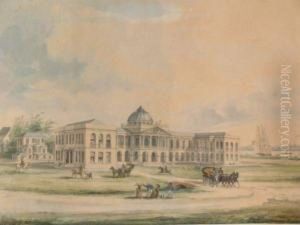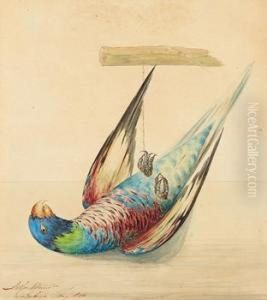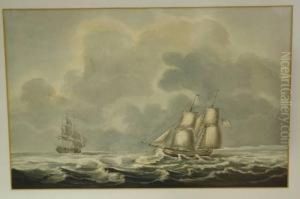Adriaan David Van Der Gon Netscher Paintings
Adriaan David van der Gon Netscher, born in 1823 and passing away in 1898, was a Dutch marine painter and watercolorist whose contributions to art, though not as widely recognized as some of his contemporaries, hold a special place within the 19th-century European art scene. His work primarily revolves around seascapes and marine subjects, capturing the turbulent beauty of the sea with a remarkable level of detail and emotion.
Van der Gon Netscher was born into an era of significant artistic evolution in the Netherlands, a period that was seeing a revival of interest in the natural beauty and national identity of the country. This context influenced his artistic direction, steering him towards the depiction of maritime scenes, which were emblematic of Dutch pride and cultural heritage. Throughout his career, he dedicated himself to honing his skills in portraying the sea's ever-changing moods, from serene sunsets to stormy tempests, with an emphasis on realism and emotional depth.
Unlike the more famous Hague School painters of his time, who often focused on landscapes and rural scenes, Van der Gon Netscher's oeuvre is a testament to the allure of the sea. His meticulous attention to light, reflection, and the intricate movements of water distinguishes his work. He was adept in both oil painting and watercolor, the latter of which allowed him to experiment with transparency and fluidity, mirroring the aquatic subjects he so often depicted.
Despite his talent and the quality of his work, Adriaan David van der Gon Netscher did not achieve the same level of fame as some of his peers. Nevertheless, his contributions to marine painting have been appreciated by art historians and collectors, particularly those with a keen interest in maritime history and art. His paintings are a valuable part of Dutch maritime heritage, capturing the essence of the 19th-century seafaring spirit with authenticity and artistic finesse.
Van der Gon Netscher's legacy, while modest in comparison to the giants of Dutch painting, is preserved in various Dutch museums and private collections. His works continue to be studied and admired for their technical skill and their emotive portrayal of the sea, offering a window into the maritime culture that has been so pivotal in shaping the history and identity of the Netherlands.


